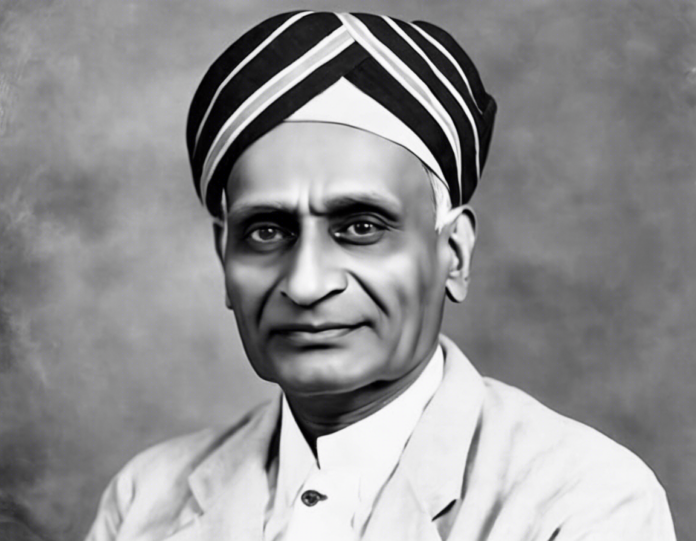Today, we delve into the intriguing world of Sir Chandrasekhara Venkata Raman, a prominent Indian physicist whose groundbreaking discoveries in the field of light scattering continue to inspire generations of scientists and enthusiasts alike. C.V. Raman, as he is widely known, was born on November 7, 1888, in the city of Tiruchirappalli in the Madras Presidency of British India. His notable achievement came in 1930 when he discovered what is now famously known as the “Raman Effect,” for which he was awarded the Nobel Prize in Physics in 1930, making him the first Asian and non-white person to receive this prestigious accolade.
Early Life and Education
C.V. Raman’s interest in science was piqued at an early age, and he pursued his higher education at Presidency College in Madras (now Chennai). He excelled in his studies and completed his Bachelor’s degree in Physics in 1904. Subsequently, he attended the University of Madras, where he obtained his Master’s degree in Physics in 1907. Demonstrating his thirst for knowledge, Raman went on to pursue further studies in the UK, where he conducted research at the University College London.
The Raman Effect
One of the most significant contributions of C.V. Raman to the field of physics is his discovery of the Raman Effect. This phenomenon occurs when light interacts with matter, leading to the scattering of light waves. Raman observed that a small fraction of the scattered light exhibited different frequencies than that of the incident light, a phenomenon now known as Raman scattering. This discovery was a pioneering breakthrough in the world of physics, as it provided valuable insights into the molecular and atomic structure of materials. The Raman Effect has since found widespread applications in various fields, including chemistry, biology, and material science.
Legacy and Impact
C.V. Raman’s legacy extends far beyond his groundbreaking discoveries. He played a pivotal role in shaping scientific research in India and fostering a culture of innovation and inquiry. Raman established the Indian Academy of Sciences in 1934, with the aim of promoting scientific research and education in the country. His contributions to science have left an indelible mark on the global scientific community, inspiring countless researchers to push the boundaries of knowledge and explore the mysteries of the universe.
Cataloguing the Legacy through Images
Images play a crucial role in preserving the legacy of iconic figures like C.V. Raman. Through photographs, artifacts, and illustrations, we can gain a deeper insight into Raman’s life, work, and contributions to science. Let us explore some key images that capture the essence of C.V. Raman’s legacy:
1. Portrait of C.V. Raman
A timeless photograph of C.V. Raman, showcasing his dignified demeanor and scholarly presence. This image serves as a visual tribute to the man behind the groundbreaking Raman Effect.
2. Laboratory Setup
An image depicting the experimental setup used by C.V. Raman to observe the Raman Effect. This image provides a glimpse into the scientific rigour and precision that characterized Raman’s research.
3. Nobel Prize Ceremony
A historic image capturing the moment when C.V. Raman was awarded the Nobel Prize in Physics in 1930. This image immortalizes Raman’s extraordinary achievement and the pride of the Indian scientific community.
4. Publication Covers
Images of covers of scientific journals and publications featuring C.V. Raman’s groundbreaking research on the Raman Effect. These images serve as a visual testament to Raman’s intellectual prowess and scholarly contributions.
5. Statue or Memorial
Photographs of statues, memorials, or plaques dedicated to C.V. Raman across India and the world. These images symbolize the enduring legacy of Raman and serve as reminders of his lasting impact on science and society.
Exploring the Raman Effect through Images
Let us now delve deeper into the Raman Effect through a series of images that visually elucidate this pioneering scientific phenomenon:
1. Spectroscopic Analysis
An image illustrating the spectroscopic analysis of light scattering in a sample, showcasing the distinct frequencies and patterns associated with the Raman Effect.
2. Molecular Vibrations
Visual representations of molecular vibrations and rotations within a sample, highlighting how the Raman Effect provides valuable insights into the molecular structure and dynamics of materials.
3. Ramifications in Material Science
Images demonstrating the application of the Raman Effect in material science, such as identifying structural defects, characterizing materials, and studying phase transitions.
4. Biomedical Applications
Visual examples of how the Raman Effect is utilized in biomedical research, such as biological imaging, disease diagnosis, and drug development, showcasing the versatility and impact of this phenomenon.
FAQs about C.V. Raman and the Raman Effect
1. What is the significance of the Raman Effect?
The Raman Effect is significant as it provides insights into the molecular and atomic structure of materials, paving the way for advancements in various scientific fields.
2. How did C.V. Raman’s discovery impact the field of physics?
C.V. Raman’s discovery of the Raman Effect revolutionized the field of physics by offering a new way to study molecular interactions and understand the behavior of matter at the atomic level.
3. What are some practical applications of the Raman Effect?
Some practical applications of the Raman Effect include chemical analysis, material characterization, biomedical imaging, and environmental monitoring.
4. How did C.V. Raman contribute to scientific research in India?
C.V. Raman played a crucial role in promoting scientific research in India through his pioneering work, establishment of scientific institutions, and mentorship of young scientists.
5. Why is C.V. Raman considered a national hero in India?
C.V. Raman is considered a national hero in India for his exceptional contributions to science, his role in fostering scientific research in the country, and his inspirational legacy that continues to inspire future generations.
In conclusion, the legacy of C.V. Raman continues to shine brightly in the annals of scientific history, reminding us of the power of curiosity, dedication, and intellectual pursuit. Through images that capture his life, work, and the Raman Effect, we honor the remarkable achievements of this visionary scientist and celebrate his enduring impact on the world of physics and beyond.


Recent comments